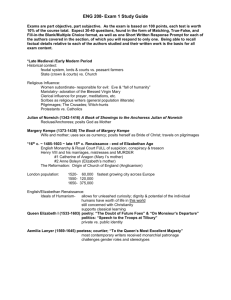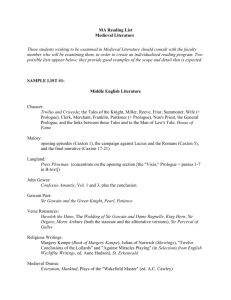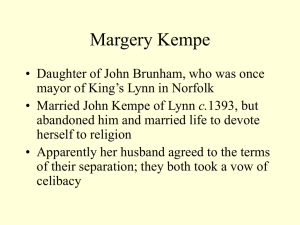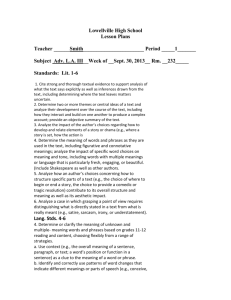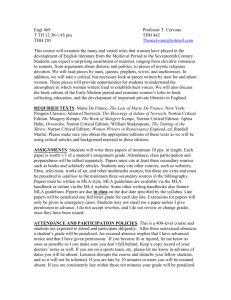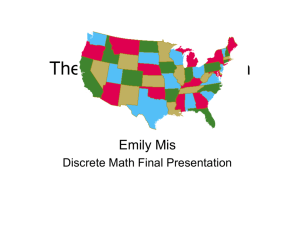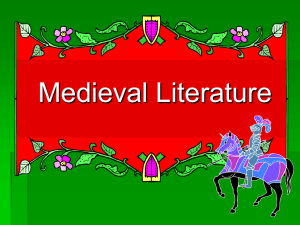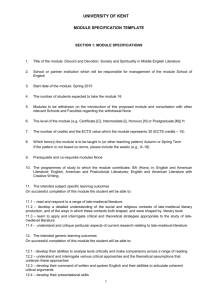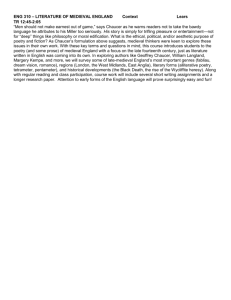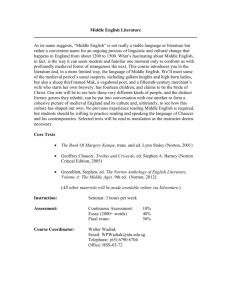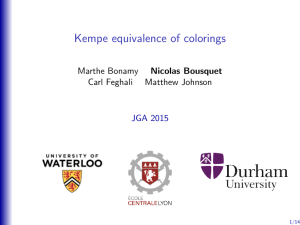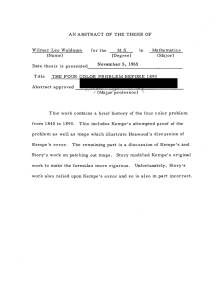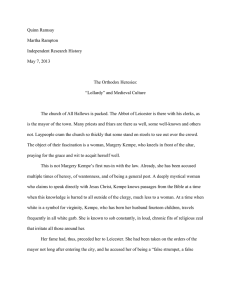Early British Nonfiction Intro
advertisement
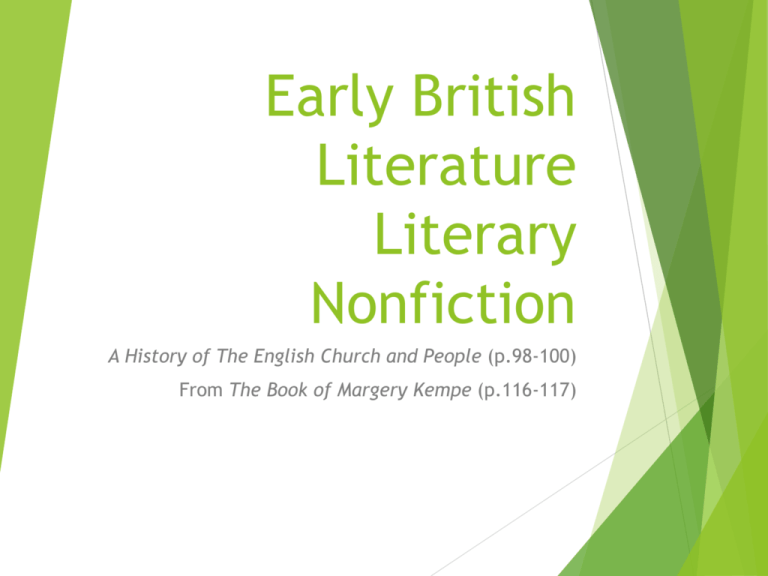
Early British Literature Literary Nonfiction A History of The English Church and People (p.98-100) From The Book of Margery Kempe (p.116-117) Journal entry/quick response A dream may inspire a person to change his way of life or to take his life in a certain direction. What other factors might inspire a dramatic shift in the way someone lives? What do you hope your life will be like and how will you achieve those goals? Background on A History of The English Church and People The Venerable Bede (an English monk) recorded information on Caedmon, the earliest English poet known to us by name Background on A History of The English Church and People According to Bede: Caedmon composed many poems in (written) English, his native tongue Only his first poem, a hymn to God the Creator, has survived He lived at Whitby Abbey, a religious community on the coast of England founded in 657 by St. Hilda (the active abbess in charge during Caedmon’s time) *Read A History of The English Church and People p.98-100 Journal entry/quick response What gives people the strength to tackle a challenge or to keep going despite obstacles or setbacks? Draw from your own experience or those of someone you know. More on A History of The English Church and People Biographical narrative Bede tells of Caedmon, a humble man who thought that he had no skill at poetry When reading the piece, focus on how a dream inspired the life of an important historical figure Background on Margery Kempe and The Book of Margery Kempe She lived from 1373-1439 Believed to be the oldest surviving autobiography in the English language Autobiography: writer’s account of his or her own life Differs from diary and memoir as a sustained narrative that attempts to make sense of a person’s life Most are written in first person Kempe wrote hers in the third person; this may reflect that she dictated her story to a scribe or her desire to be humble Ordinary Wife and Mother Born in Lynn, a town in the country of Norfolk, England Father served 5 terms as mayor Born into a prominent family Received little education (like most women of her time) Married John Kempe, a tax collector, at age 20, and began raising a family She gave birth to 14 children Forsaking Secular Life Around 40 years old, decided to live in chastity and preach to the world Abnormal at the time for women to preach since nearly every aspect of life was controlled by men Any woman wishing to pursue spiritual calling was expected to join a convent or life as a recluse; Margery Kempe did neither Began a series of pilgrimages to Jerusalem, Spain, Italy, and Germany Some considered her a model of human compassion and devotion, while others disapproved of her lifestyle A Gift of “Holy Tears” In Jerusalem she began having fits of tears, claiming they were a special gift from God, a physical token of her special worth in his eyes Violent fits of hysterical crying at unpredictable times Both clergy and common people found her anywhere from annoying to heretical (profane) Kempe encountered persecution and ridicule Her Life Story 1430s Kempe began dictating her life story to scribes (illiterate like most women since denied education) Her story is valued for several reasons: captures life in the 1400s (showing social customs, speech, and attitudes of the day); shows Kempe’s spiritual character (woman of strong faith who lived by her convictions despite social criticism and oppression) *Read from The Book of Margery Kempe p.118-121
